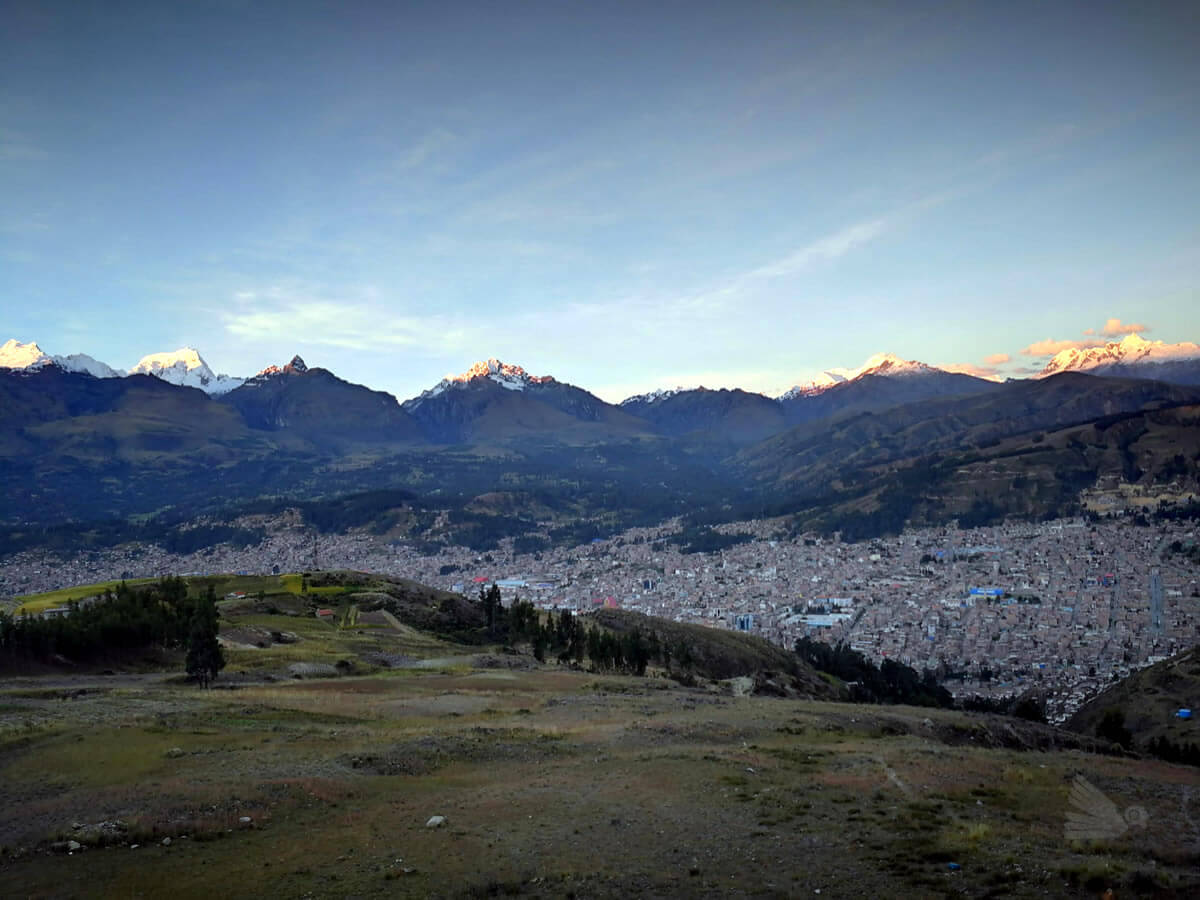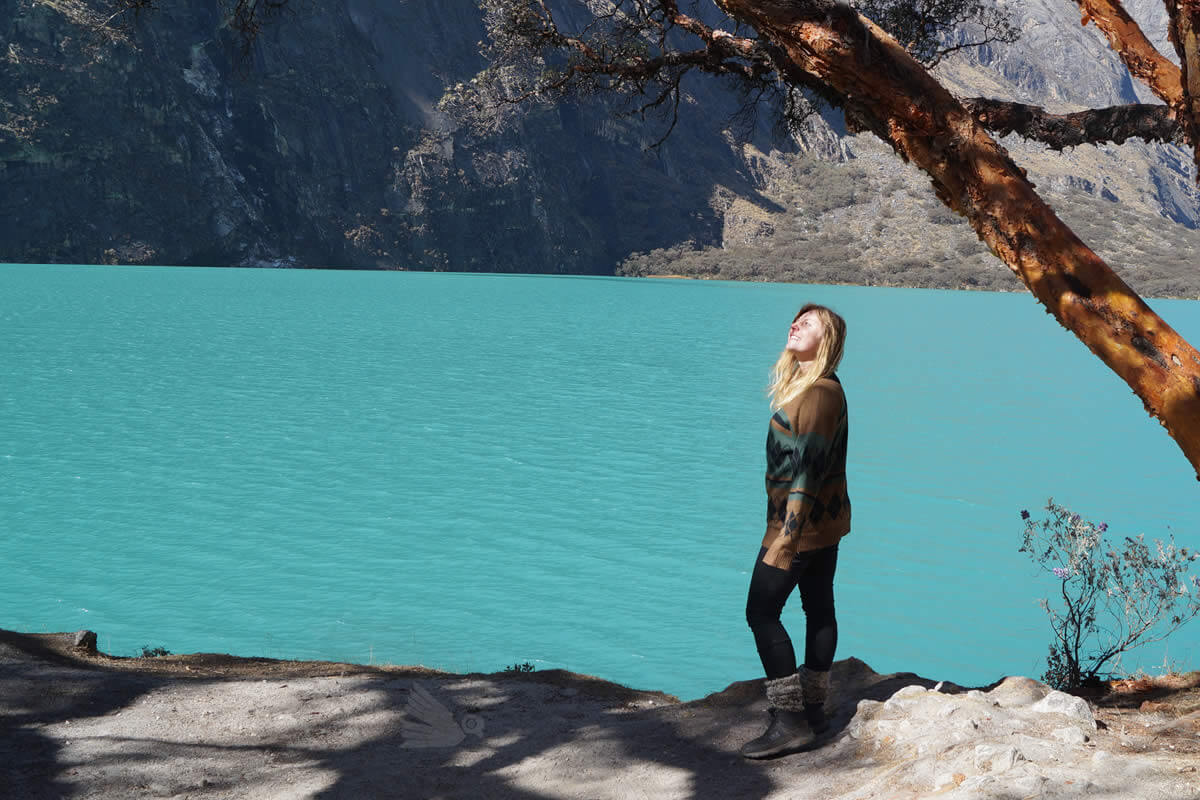The pandemic caused by the Covid-19 virus has been a terrible blow to the health and economic sectors of the entire world. In Peru tourism has been one of the industries worst affected by the shutdowns and social distancing. In Peru a state of emergency was decreed with an obligatory quarantine on March 16th, 2020 for a period of 15 days, which included a nighttime curfew and an all-day curfew on Sundays. These measures were extended several times until they were replaced by a “targeted quarantine”, which lasted until the first of October when the infection rate had begun to subside. In the department of Ancash the coastal cities were more affected by Covid-19 than cities in the sierra. Peru’s economic activation is currently in its forth phase; in the tourism sector it is now permissible to visit Huascaran National Park, archeological sites like Chavín de Huantar, and other routes of interest to tourists in the Callejón de Huaylas and the Conchucos region. In these times of pandemic there is a lot of uncertainty as to whether or not it is practical to travel in Peru, but the current regulations are in reality quite simple and reasonable.
For the most part, a trip to the Cordillera Blanca is not much different than normal, and, keeping a few precautions in mind, is just as beautiful, easy, and secure as it always has been.
Below is some helpful information to help you plan your trip.
General recommendations for travel to Huaraz in a secure manner:
- If you are a person considered to be in an at-risk group for Covid-19, you should consult your doctor before traveling.
- If you have any potential symptom of Covid-19, do not travel.
- If you travel with other people, limit the group to family and close friends.
Always maintain a safe social distance; at least one meter between people. - Use a mask in the correct manner.
- Make sure you always use correct hygiene and disinfect regularly.
- Respect the posted working hours and the capacity of the sites you visit.
- To avoid physical contact, use an electronic means of payment whenever possible.
- Remember that all public interprovincial travel (buses) requires that you present a statement swearing that you have no symptoms of Covid-19 and that you have not had contact with anyone infected in the last two weeks. This can be in either a printed or digital format. https://cdn.www.gob.pe/uploads/document/file/1012861/T._Terrestre_DJ_Salud.pdf
- To enter Huascaran National Park, you will need to fill out and present the following sworn statement:
https://servicios.sernanp.gob.pe/djcov/formulario - To visit the Chavin Archeological Monument you must register online at least three days before your visit and present a sworn statement of good health. For more information please visit this website: https://cutt.ly/1hoi1ev
- Since the majority of these activities are out-of-doors, remember to come prepared with warm clothes for the cold, rain gear, and a wide brimmed hat for sun.
Travel to Huaraz
The drive from Lima to Huaraz is a trip of about eight hours on paved road. You can travel by private car, but public transportation is also readily available. If you can afford it, traveling by private car is recommended. Public interprovincial transportation resumed in October and currently offers daytime and nighttime bus service. For your safety and the safety of your fellow passengers, all bus services are required to comply with the Covid-19 health protocols established by the Ministry of transportation and Communication (MTC). The requirements are that all passengers use both masks and facial protectors and present a statement swearing that you have no corona virus symptoms to be allowed to board the bus. This gives some assurance that you will not contract Covid-19 while traveling. Furthermore, the bus company is allowed to use all available seats as long as they are correctly protected with a curtain of polyethylene or similar material to separate the seats that are side by side.
Currently, there are no flights between Lima and Huaraz, but there are rumors that the airline ATSA is considering to offer service on this route.
Since the fifth of October international flights to Peru have resumed, but these flights are subject to interruptions due to the emergence of the new strain of the corona virus in England. All travelers arriving in Peru are required to comply with the current health protocols.
The best time of year to travel
The sierra of Ancash has two well-defined seasons; the dry season and the rainy season. The dry season is between May and September while the rainy season is between October and April. Without a doubt, the dry season has obvious advantages for outdoor activities in Huaraz and the Cordillera Blanca, but the rainy season isn’t necessarily always as bad as one might imagine. In this part of Peru during the rainy season, the so-called “Andean winter”, it only tends to rain in the afternoons, which allows for outdoor activities of short duration in the mornings, often until two or three o’clock in the afternoon. This allows for treks to lakes and viewpoints, bicycle rides, horse riding, and visits to archaeological sites.
There are even some advantages to rainy season visits. The mountains are likely to be covered in fresh snow, the hills are green, and the tourist attractions are generally uncrowded.
Things to do
The Huaylas Valley, the Cordillera Blanca, the Cordillera Negra, and the Conchucos region offer many options for outdoor activities. According to the current regulations in Huascaran National Park, which comprises the bulk of the Cordillera Blanca, only one-day visits are allowed. It is worth mentioning that Covid-19 safety guidelines are already in place for multiple-days treks, but the trails remain closed to trekkers. In all likelihood this will change in the near future.
Among the activities that are currently open to one-day visits are many classic routes such as: the Llanganuco lakes, the Chavin archaeological complex, the Willcahuain archaeological site, the Honcopampa archaeological site, Chacas, Punta Olímpica, and Pastoruri mountain. Treks to high valleys and glacial lakes in the Cordillera Blanca such as la Lake Paron, Lake 69, Lake Uruscocha, Lake Llaca, Lake Churup, Lake Rajucolta, and others are currently open to visitors. Furthermore, routes open to bicyclists that pass through picturesque villages in the Cordillera Blanca and the Cordillera Negra are abundant.
Where to spend the night
Huaraz and the Huaylas Valley offer hotels and lodges of various categories suitable for all budgets where you can spend the night quite comfortably. A considerable number of hotels are currently in compliance with the Covid-19 safety rules and protocols put into place by the Ministry of Health and the Ministry of Exterior Commerce and Tourism.
Make sure that the hotel you select has implemented these safety protocols.
Where to eat
The majority of the high profile restaurants in Huaraz have implemented the appropriate health safety protocols. It isn’t difficult to distinguish them by their socially distanced seating arrangement and the presence of a hand washing and disinfectant station at the entrance. For daytrips to the mountains and lakes, it is recommended that you bring your own water and food from town, either from a trusted restaurant or a box lunch that you have prepared yourself.





